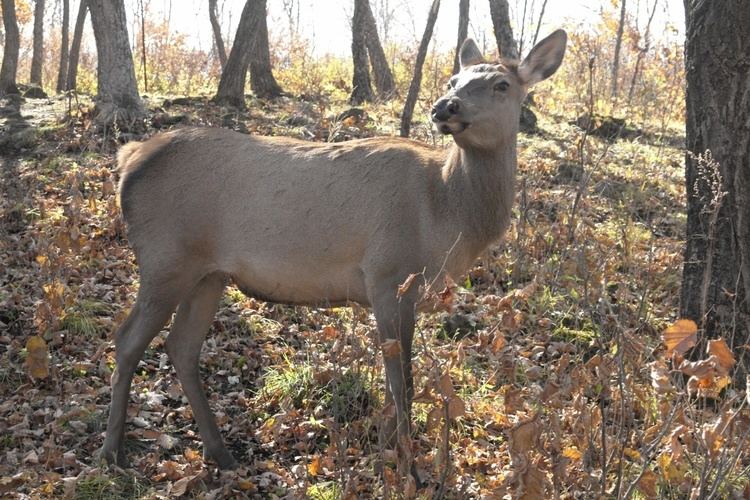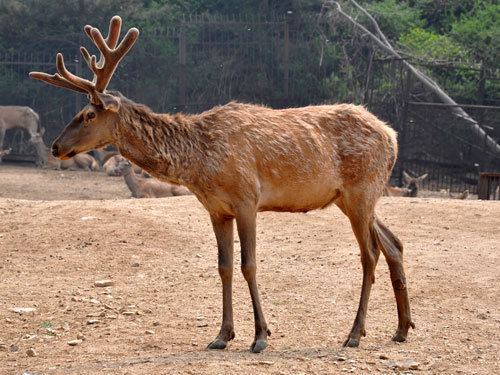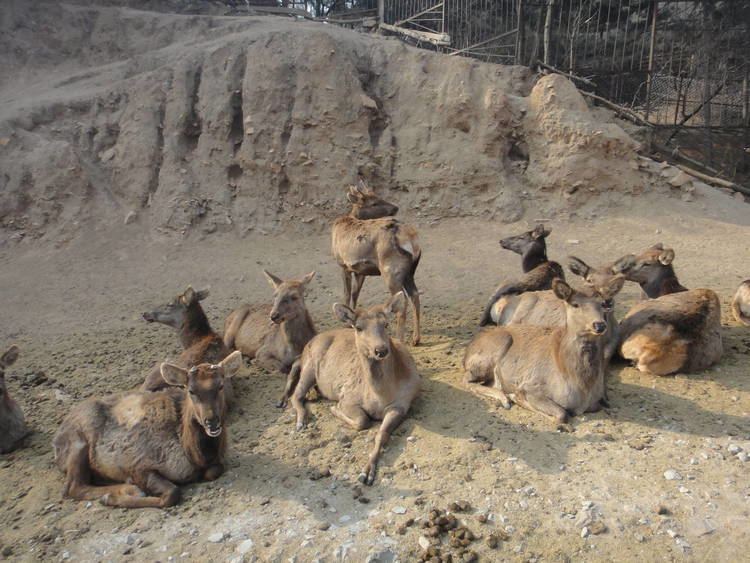Family Cervidae Rank Subspecies | Phylum Chordata Order Artiodactyla | |
 | ||
Similar Siberian musk deer, Capreolus, Sika deer, Red deer, Siberian roe deer | ||
The Manchurian wapiti (Cervus canadensis xanthopygus) is a subspecies of Cervus canadensis (named "elk" or "wapiti" in North America), native to eastern Asia.
Contents

Description

The Manchurian wapiti is reddish brown during summer, and brownish gray in winter. It has dark hairs on the neck and dark underparts, followed by a light-colored rump patch. It is smaller than North American elk (Cervus canadensis canadensis) with smaller and stouter antlers.

Male deer are wapiti-like with a neck mane, and as mentioned, relatively small wapiti-like antlers. Female deer are more red deer-like and lack neck manes. This deer is the most red deer-like of the wapiti, being adapted to mixed deciduous forest environments in Manchuria, Yakutia, Northern China and North Korea. Like many red deer, adult deer may have some visible spots in their summer coats.

Cows weigh 140 to 180 kilograms (310 to 400 lb) and bulls weigh 170 to 250 kilograms (370 to 550 lb).
Range

This deer is found in southeastern Siberia (to the east of Lake Baikal), northeastern Mongolia, Manchuria, northern Korea and northeastern China. Similar forms from Alxa, Gansu, Shanxi and southern Mongolia were originally described as a distinct subspecies, the Alashan wapiti (Cervus canadensis alashanicus). However recent genetic research indicates that this deer belongs to the Manchurian subspecies.
